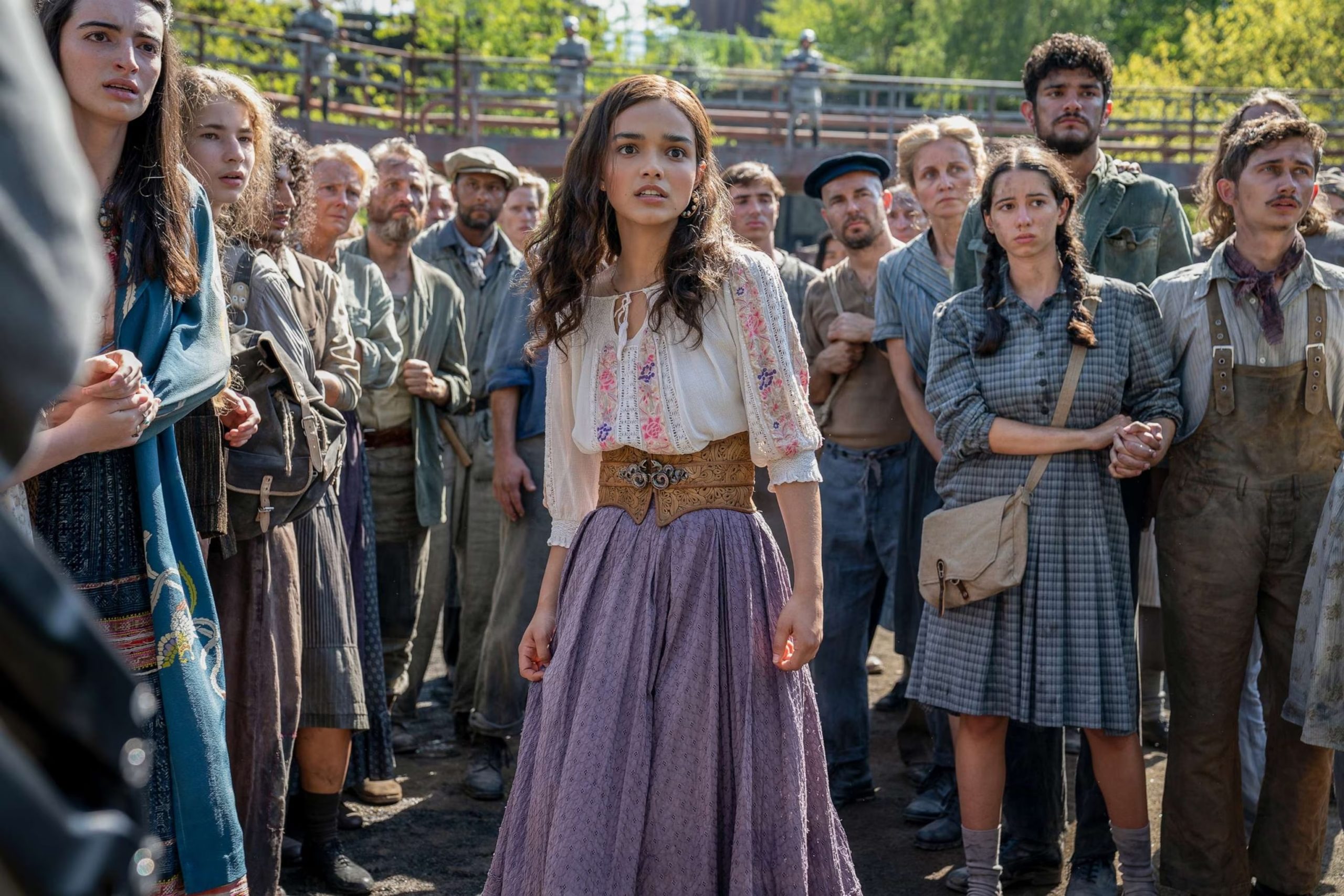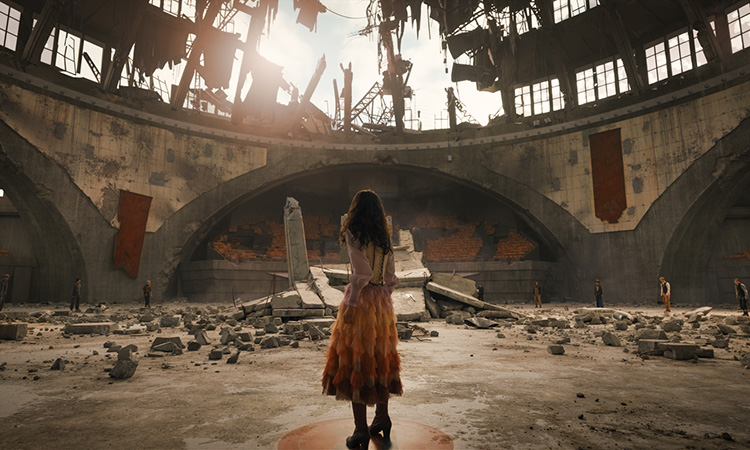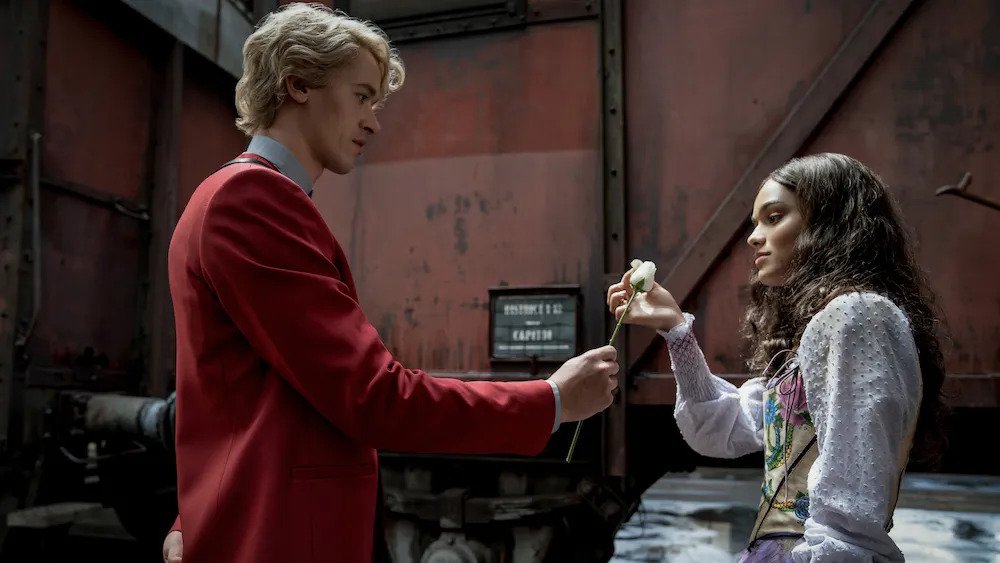By: Staff Writers Shuhan Jin & Keerti Koya
After an eight-year hiatus since the last The Hunger Games film series movie, the release of The Hunger Games: The Ballad of the Songbirds & Snakes invites both new and old fans back into the dystopian setting where the Games take place. Released on November 17, The Hunger Games: The Ballad of Songbirds & Snakes is a prequel to the events of The Hunger Games, the first movie of the series. The film follows a young Coriolanus Snow (Tom Blyth) as he grapples with his identity in the Capitol and the districts, and battles a race against time to survive the Capitol and financial pressures. Through a combination of heart-wrenching plot twists, clever changes from the original book The Ballad of Songbirds and Snakes, and well-executed storytelling by the actors, The Hunger Games: The Ballad of Songbirds & Snakes manages to captivate audiences and breathe new life into the dystopian universe.
The Hunger Games: The Ballad of Songbirds & Snakes follows Snow and his mentee Lucy Gray Baird (Rachel Zegler), a tribute from District 12, as they take on Panem’s 10th annual Hunger Games. Their journey unfolds as Snow, driven by the ambition to ensure Baird’s triumph in the Games, also aims to secure the coveted Plinth Prize — a prize that would be awarded to the student who mentored the victor of that year’s Games. The film, divided into three parts — “Part I: The Mentor,” “Part II: The Prize,” and “Part III: The Peacekeeper,” — shows a glimpse into the life Snow lived before he worked his way up the ladder of Panem’s elite society. The film not only looks deeper into the complex psyche of Snow, but also explores the tangled web of power, morality, and survival in a way that leaves fans eager for more.
Right off the bat, the parallels between The Ballad of Songbirds & Snakes and past The Hunger Games movies, most notably Baird’s fascination with the Katniss plant, the identical bows both Katniss and Baird give, and Baird’s iconic song, “The Hanging Tree,” are apparent. Ultimately, the overarching parallels perfectly tie the movie together, allowing watchers to make a variety of different conspiracies and theories.
Specifically in The Ballad of Songbirds & Snakes, the film’s producers skillfully depict the distinct atmospheres of each part of Snow’s journey in quite an exceptional way. In each of the three parts of the movie, Snow’s actions reflect both his surroundings and his new motives. As he moves from the Capitol to the districts, his goals shift and the filming of the movie reflects these changes.
In “Part I: The Mentor,” the cinematography depicts the innocence of youth amongst the characters and the harsh realities of the Capitol. The use of vibrant colors and energetic camera work produce a visually stunning background that highlights the disparity between the districts’ struggles and the Capitol’s opulence.
As the story progresses into “Part II: The Prize,” the filmmakers seamlessly modify their visual language to reflect the intensifying stakes. The arena is brought to life with a combination of practical effects and modern computer-generated imagery (CGI), emphasizing the fierce competition while keeping the audience’s attention on Snow’s developing character. The fluidity of the action sequences and the strategic camera angles increase the suspense and emotional impact of crucial scenes.
In “Part III: The Peacekeeper,” the filmmakers use lighting and composition to illustrate the growing darkness of Snow’s world. The use of shadows and subdued tones reflects the moral ambiguity of his choices and the societal unrest developing in Panem.
However, while the movie has quite an intricate plot, there are undoubtedly many gray areas. For example, a lack of transitions throughout made the film seem rushed and chopped. It was clear that many details from the original book were left out, which resulted in several scenes that were choppily connected. Throughout the three sections, scenes jumped from one storyline to another, with few transitions to connect them. With three full sections, the amount of content seemed to overpower the attempt to connect it with transitions. With many missing links between scenes and sections, it was difficult for viewers to completely understand the plot without having read the book beforehand.
Nevertheless, the collaborative efforts of the film creators, combined with the book’s original plot, resulted in a film that stayed true to the essence of The Hunger Games series and pushed the boundaries of cinematic storytelling. The producers’ dedication to quality played a central role in making The Hunger Games: The Ballad of Songbirds & Snakes a standout addition to the franchise.
Graphics by: Scifinow, ABC News, Variety & PBS





Be the first to comment on "The Hunger Games: The Ballad of Songbirds & Snakes lives up to high expectations"